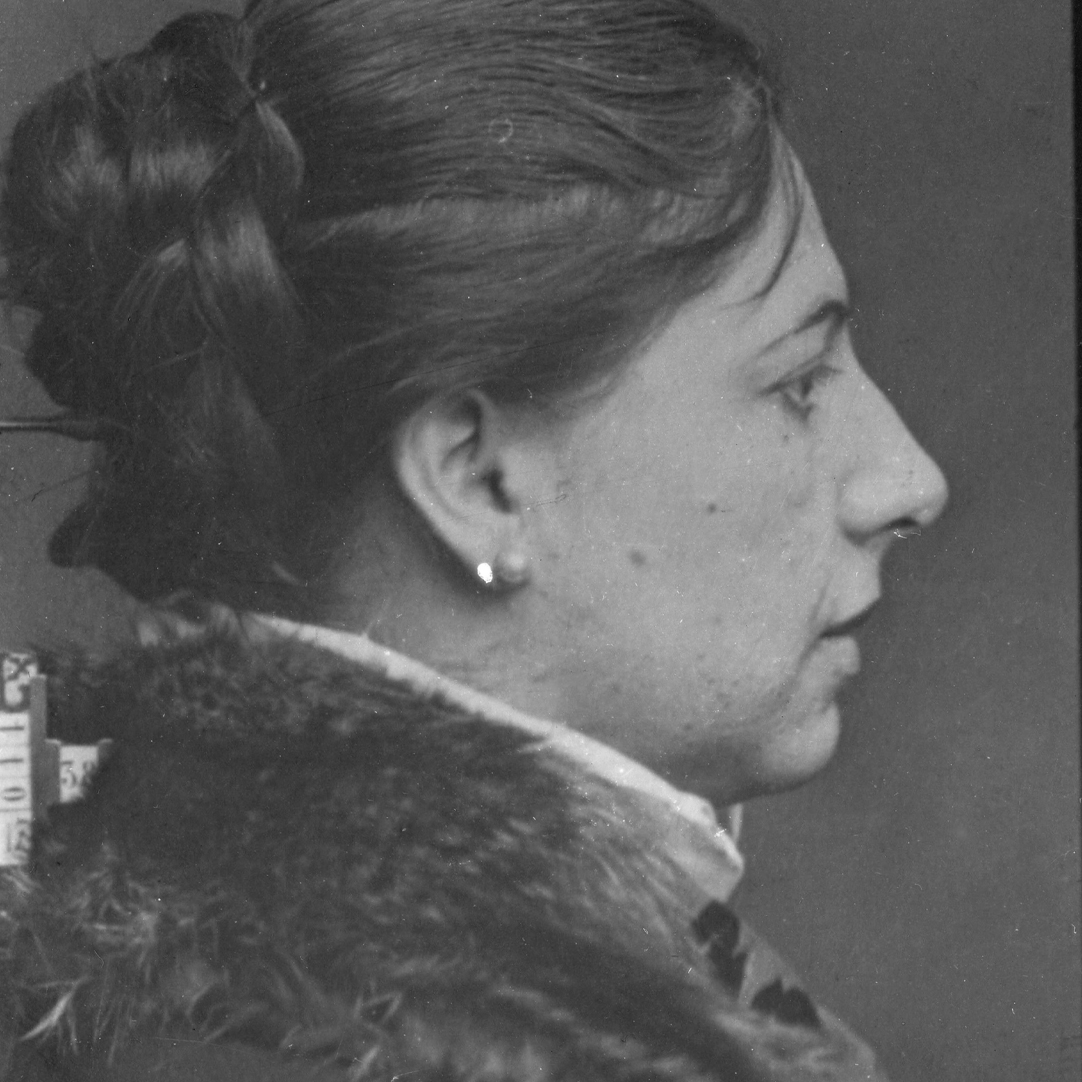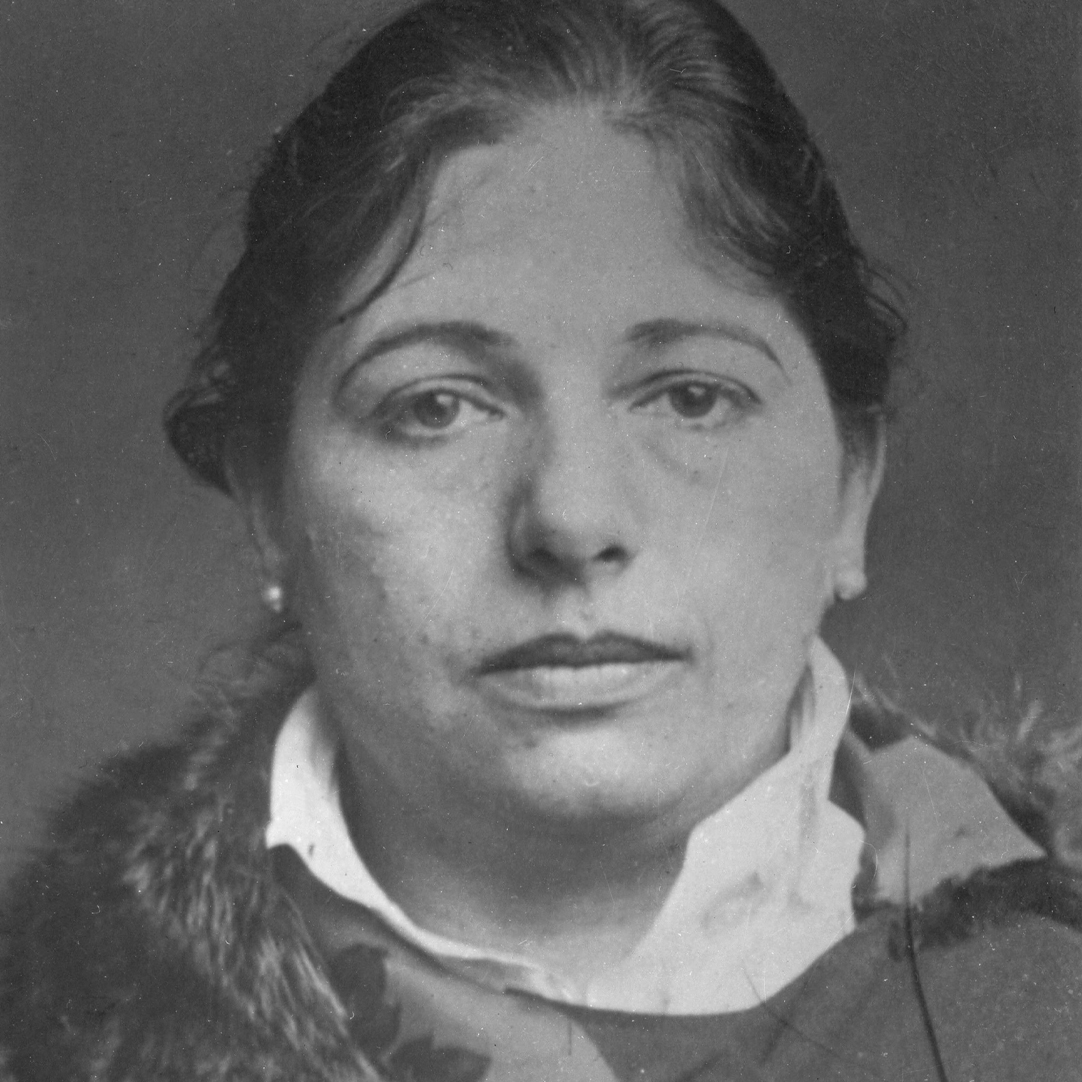Colorized by me: this is a mugshot of Margaretha Zelle. You may not recognize her, but I'm pretty sure you know who she is. Margaretha was a Dutch exotic dancer and courtesan who was convicted of being a spy for Germany during World War I.
She was best known as Mata Hari.



She was best known as Mata Hari.




On 13 February 1917, Mata Hari was arrested in her room at the Hotel Elysée Palace on the Champs Elysées in Paris. She was put on trial on 24 July, accused of spying for Germany. 

Although the French and British intelligence suspected her of spying for Germany, neither could produce definite evidence against her. Supposedly, secret ink was found in her room, which was incriminating evidence in that period.
She contended that it was part of her makeup.
She contended that it was part of her makeup.

Zelle was executed by a firing squad of 12 French soldiers just before dawn on 15 October 1917.
She was 41.
She was 41.

According to an eyewitness account by British reporter Henry Wales, she was not bound and refused a blindfold. She defiantly blew a kiss to the firing squad. 

Despite her having admitted under interrogation to taking money to work as a German spy, many people still believe she was innocent because the French Army needed a scapegoat. bit.ly/3fCsjCE
Her execution merited a scant four paragraphs inside The New York Times, which called her "a woman of great attractiveness and with a romantic history."
bit.ly/2RYs6k8
bit.ly/2RYs6k8

"I have encountered in this world riff-raff and good people. I lose. I win. I defend myself when I am attacked. I take when someone has taken from me. But I beg you to believe me; I have never done an act of espionage against France. Never. Never." 

More colorized photos in my books: marinamaral.com/books/
• • •
Missing some Tweet in this thread? You can try to
force a refresh
















